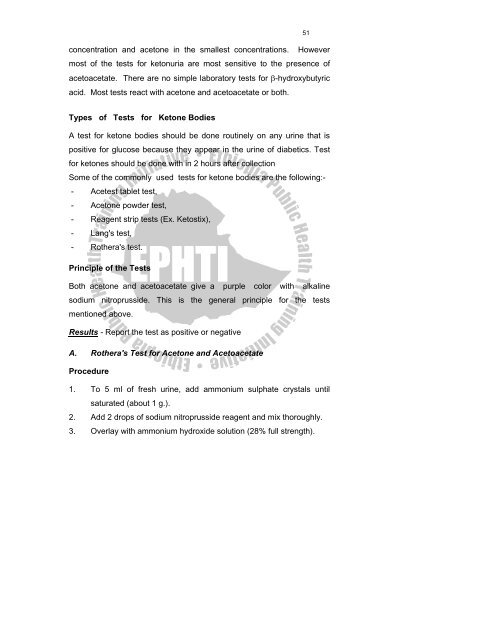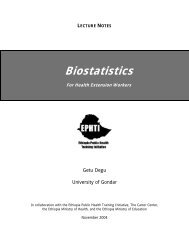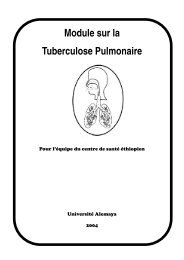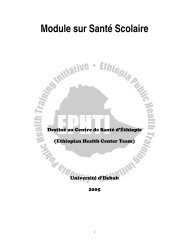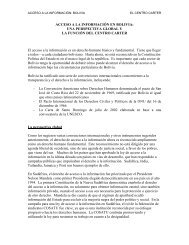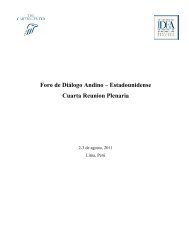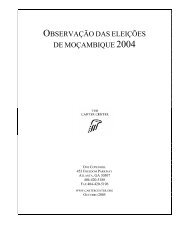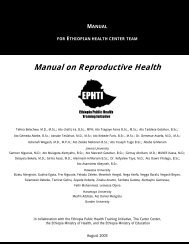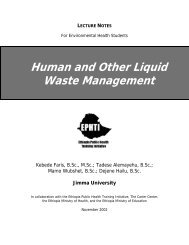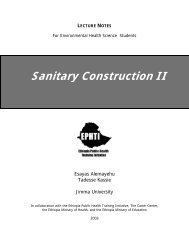Urinalysis - The Carter Center
Urinalysis - The Carter Center
Urinalysis - The Carter Center
You also want an ePaper? Increase the reach of your titles
YUMPU automatically turns print PDFs into web optimized ePapers that Google loves.
concentration and acetone in the smallest concentrations. However<br />
most of the tests for ketonuria are most sensitive to the presence of<br />
acetoacetate. <strong>The</strong>re are no simple laboratory tests for β-hydroxybutyric<br />
acid. Most tests react with acetone and acetoacetate or both.<br />
51<br />
Types of Tests for Ketone Bodies<br />
A test for ketone bodies should be done routinely on any urine that is<br />
positive for glucose because they appear in the urine of diabetics. Test<br />
for ketones should be done with in 2 hours after collection<br />
Some of the commonly used tests for ketone bodies are the following:-<br />
- Acetest tablet test,<br />
- Acetone powder test,<br />
- Reagent strip tests (Ex. Ketostix),<br />
- Lang's test,<br />
- Rothera's test.<br />
Principle of the Tests<br />
Both acetone and acetoacetate give a purple color with alkaline<br />
sodium nitroprusside. This is the general principle for the tests<br />
mentioned above.<br />
Results - Report the test as positive or negative<br />
A. Rothera's Test for Acetone and Acetoacetate<br />
Procedure<br />
1. To 5 ml of fresh urine, add ammonium sulphate crystals until<br />
saturated (about 1 g.).<br />
2. Add 2 drops of sodium nitroprusside reagent and mix thoroughly.<br />
3. Overlay with ammonium hydroxide solution (28% full strength).


